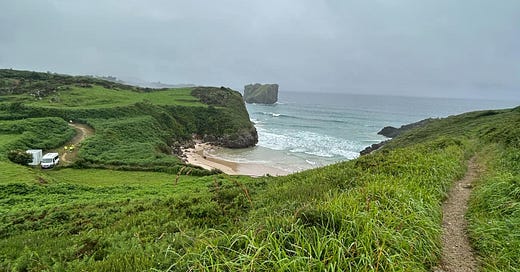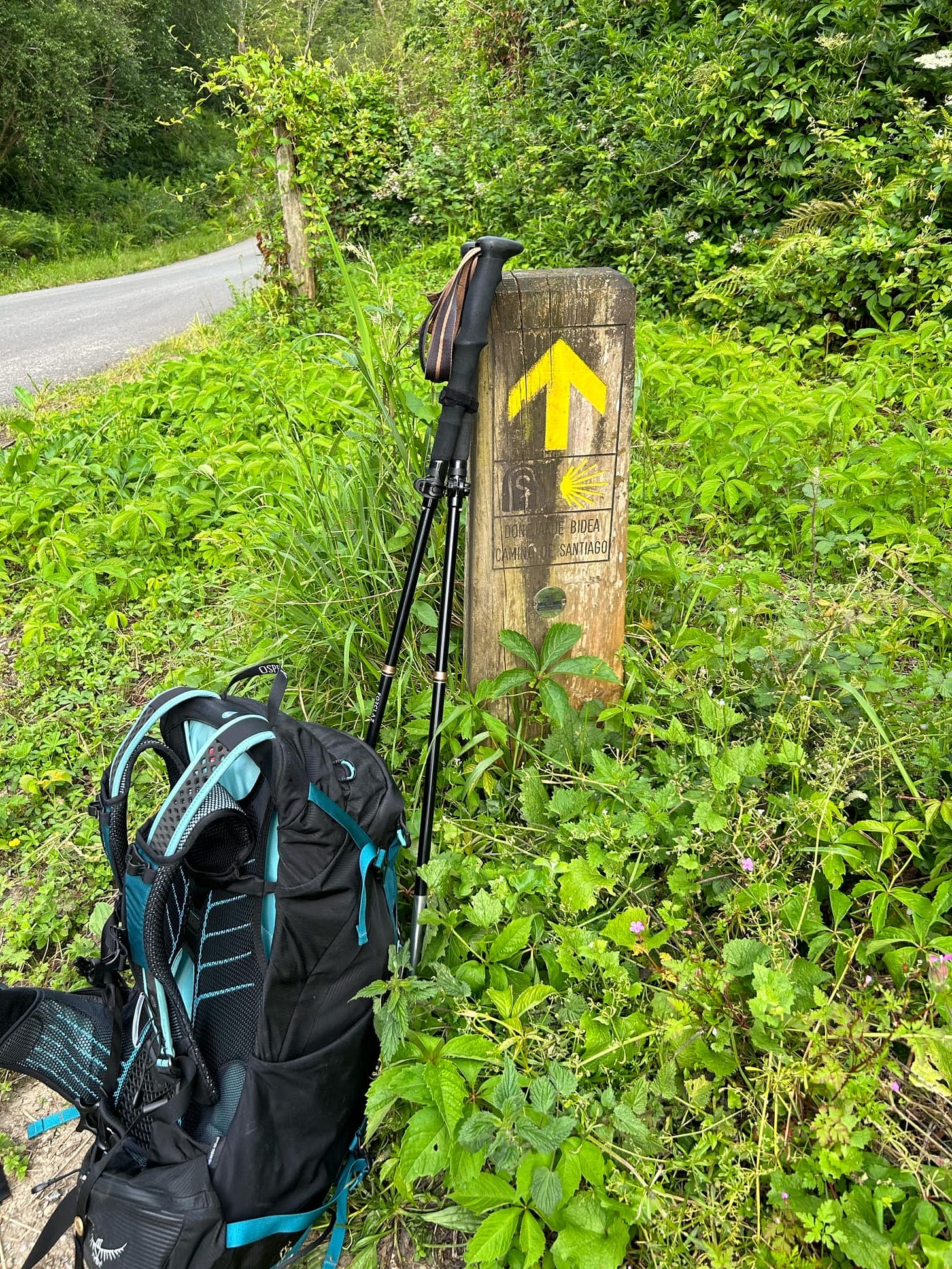Walking the Camino (Part 1): Sculpting the Heart
My friend Éric walked the Camino de Santiago this summer. Our conversation was extraordinary! The interview is split into two parts, so make sure you come back next week for part 2.
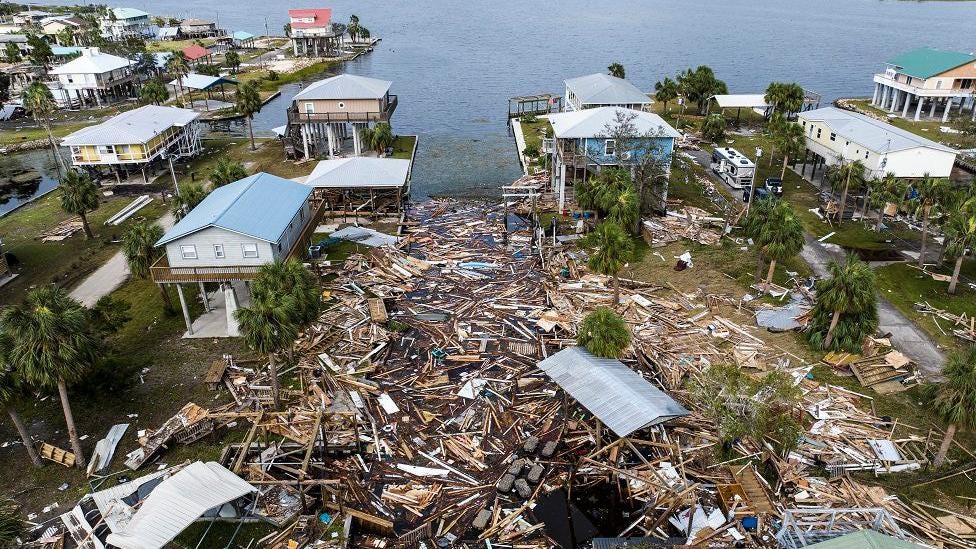
Mutual Aid in a Time of Crisis
I’m in a group on Facebook called A Way Forward; this group is for people seeking to ready themselves, as much as is possible, in our time of climate crisis, multiple pandemics, and political instability. The posts and their ensuing conversations range from what supplies to keep in your car in case you have to evacuate, the best recipes for foraged greens, troubleshooting food storage, canning tips, and so much more. The more than 1000-member group is diverse, with people from around the world. It is a Covid-cautious, climate-change-aware, politically progressive community. The other day, when I was taking care of a sick husband and wanted to make a nourishing soup with butternut squash, members gave me lots of recipes I might try!
In all of the diverse conversations, there is a topic that gets brought up repeatedly: the importance of mutual aid. In a crisis situation, whether that be because of a global pandemic that has left the most vulnerable struggling for masks and rapid tests, or a weather disaster that has wiped out roads and communications, or a rise in hate crimes as a result of nationalist rhetoric, the need for mutual aid is discussed often.
Mutual aid is a voluntary model of cooperative organizing to ensure that the most vulnerable in a community are cared for and that there are enough food, water, medicine, and other needed supplies to go around in times of difficulty. It’s about working together for the sake of one another. In our time of individualism and the failure of government support systems to help those in need, mutual aid is a powerful antidote.
When Hurricane Helene struck last week and caused devastation across 5 states in the American southeast, many in the Way Forward group were impacted. In addition to sharing their stories of property damage and not being able to get in touch with loved ones (and worse), the call to mutual aid to assist the hard-hit communities went out. With boots on the ground (and mules in some places, where all the roads are destroyed), people immediately began to come together. In our online group, lists of items needed were created, Venmo and Paypal accounts were opened for donations, and those who could are driving their cars, trucks, and even a decommissioned fire truck, all loaded with food, personal and health items, chainsaws, generators and water filters, to help.
What’s been made clear in the Way Forward group is that mutual aid doesn’t just happen; it’s most effective when relationships and connections are made before disaster strikes. As the climate crisis continues to impact us and those we love in such devastating and increasingly unpredictable ways, we’re going to need mutaul aid more than ever. Mutual aid is something that the church, historically, has known how to do. In this time of climate chaos, communities of faith can be places where we work on building the relationships and connections essential for offering mutual aid when disaster strikes. The church can help in creating mutual aid networks that are ready to step up when needed.
If there’s one lesson we can take from Hurricane Helene, it’s this. No place and no one is immune to the devastation that the climate crisis can bring. So, let us work on creating mutual aid networks now. Let us work on mutual aid together. As people of faith, let us reach out to our churches and find out what is happening already to build a mutual aid network, and then help to make it stronger. Friends, this is your Friday Nudge.
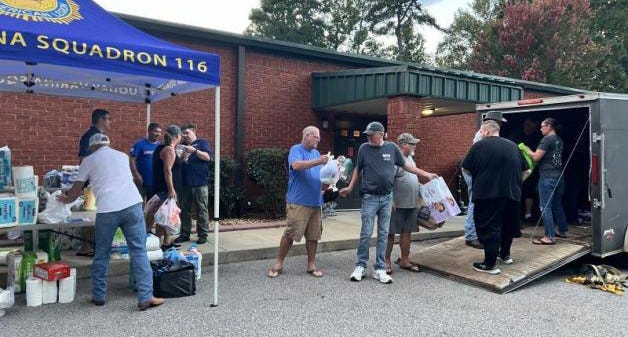
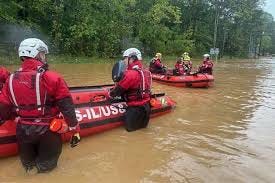
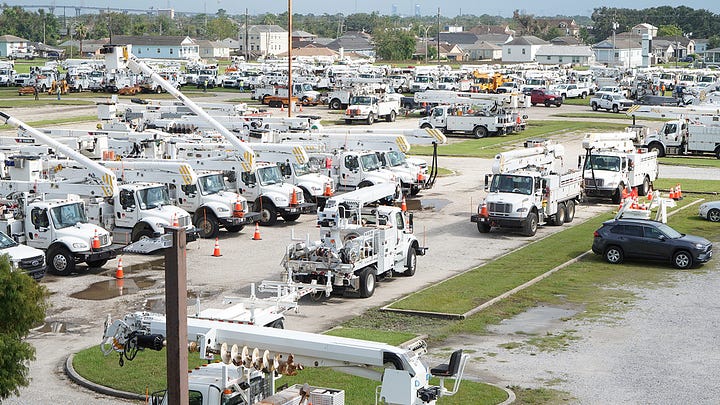
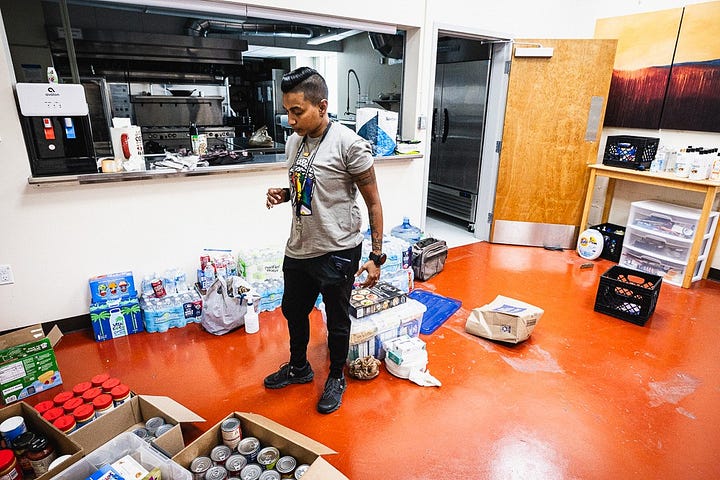
We are in a climate and ecological crisis, and it’s all hands on deck... Subscribe to join a community of people of faith who care about climate action and find hope and encouragement at the same time!
Walking the Camino (Part 1): Sculpting the Heart
An Interview with the Rev. Éric Hébert-Daly
Éric is the Executive Minister for the Eastern Ontario Outaouais, Nakonha:ka and East Central Ontario regional councils of the United Church of Canada. He and I have been friends for more than 10 years, and share many things in common, including our Acadian French heritage and love for the natural world. I was thrilled when he agreed to sit down with me before and after the journey he is about to take on the Camino.
I sat down with Éric after his return. We had an incredible conversation! Éric was open and vulnerable and shared so much learning and wisdom for us all. I have broken the post-Camino interview into two parts, to be shared this week and next. Here is the first part of our conversation, in which we hear about how far he walked, his experience of God during that time, and the surprising learning he gained.
Come back next week to read about his encounters with the natural world and how he relates his experience walking the Camino to the need for climate action.
Missed our interview before he left? Read it here.
Walking the Camino: Lessons from the Preparation
Hey! I’m Jessica, and welcome to my newsletter about faith and climate action. We are in a climate emergency; it’s all hands on deck... Subscribe to join a community of people of faith and like-minded people seeking to make change!
Jessica: Hey, Éric! Why don't you remind me where you went and how long you were gone?
Éric: When we last talked I was [planning] to walk the Camino del Norte and the Camino Primitivo into Santiago and then possibly walk the [Camino] Finisterre to the coast. Well, it turns out that my plans changed and I ended up walking more caminos than I had expected because I was moving at a much faster rate than I had expected.
Jessica: Wow!
Éric: And that isn't because I was walking fast, it was because I had itchy feet. I had planned a whole bunch of rest days, and after I did my first rest day, I thought this wasn't what I needed to do. So I changed it so that my rest days became sort of partial walking days rather than complete rest days. Which was very good for me, and it turned out that that was a better pattern.
Jessica: I'm not surprised, honestly.
Éric: I know you wouldn't be surprised! But what it means is that I walked the Camino Lebaniego and the Camino Inglés, as well as the Muxia Finisterre Camino at the very end, and walked 1458 kilometres.
Jessica: Wow, 1458!
Éric: It was an average of about 25 kilometres a day. There were days I did 39 kilometres that were brutal. And there were days I did 8 kilometres, which were light and in fact, forced me to walk very slowly because you get kicked out of an albergue [the pilgrim hostels] at 8 a.m. And often they don't receive new people until 3 p.m. Walking 8 kilometres over a span of 7 hours is its own learning. It's its own discipline.
Éric: So that's what I ended up doing in the end. The Camino Lebaniego was one I had briefly heard about [and had in] the back of my head, but I thought, Oh, I don't have time for that. It's a five-day Camino into the Picos de Europa, which are the biggest peaks in Spain. It goes to a monastery in Santo Toribio. The monastery is well hidden in the mountains because it holds the last large remaining pieces of the cross.
Jessica: The cross?
Éric: Yeah. It is considered the fourth most significant pilgrimage site in the world for Christianity.
Jessica: I didn't even know about it.
Éric: I didn't know about it much either, and a funny thing happened a couple of days before I got to the turnoff from the Camino del Norte; I was getting cut by brambles all the time; they reached and came out at me, and it's very funny. Anyway, I had gotten this weird cut on my arm, in the shape of a cross.
I had heard about the Camino Lebanego, and I had all this extra time already. I was more than a week ahead of schedule, and I [thought] well, a five-day camino will put me largely back on track if I just do this. And it felt like I needed to do that, and it was the most spectacular experience of all the walking I did.
Jessica: Did you see the cross?
Éric: Yes. In fact, I was wearing my collar that day. I got to the end of the Camino de Beñigo at the monastery and busloads of tourists were coming through and it's chaos! A woman runs up to me and says, “You're a pilgrim,” because she saw me with my backpack and my walking sticks. She said, “Have you just finished the Camino de Beñigo?” and I said yes, and she said, “Would you like to do the mass with the priests?” And I said, “Well, I'm a Protestant minister.” And she says, “Oh, okay. Well, in that case, I clear out all the tourists 15 minutes before the Pilgrim Mass. Why don't you come in and I can let you sit with the cross for 15 minutes on your own?”
And so I did. I'm not a Catholic; [for me] relics are not the be-all and end-all. But this was a pretty sacred moment. For 15 minutes, I was with the cross.
And then there were maybe 20 people on the whole Camino, right? It wasn't a very busy pilgrim mass; there were only a handful of us in the mass. At one point during the mass, the priest brings the cross out for us to touch. There's one little spot that you're allowed to touch. And, so each of us had a moment, of being connected to the cross.
And the thing that kept coming up for me over and over and over again was empire. And the power of empire in its brutality really just kept sort of playing for me.
Jessica: Yeah.
Éric: And it was a privilege. It was a pretty amazing experience and something I had not expected at all.
Jessica: No! “Hey Scott, guess what I did today?”
Éric: Yeah. And in fact, on that Camino, it was one of the few times I called Scott in the middle of the day. Not on our normal Sunday [when we’d agreed to talk]. I shared with him just the view of what I was seeing in the Picos which was stunning. I mean, they were hard walking days because it was a 1600-meter climb at one point. Which is not insignificant, but at that point my legs were so strong and I was like, this is fine.
Jessica: Okay, so I'm looking at the questions I prepared and I’m still going to ask this big question. How was the experience of walking the canoe?
Éric: As you know, I walked it to exercise my solitude muscles. And in fact, about 75 percent of the time I walked alone. And there were some of the Caminos where there were full days when I didn't see another pilgrim. I would only see them when I left the albergue [in the morning] or when I finished. But because of pacing, because there just weren't a lot of people. I was very much alone for long chunks of time. Which, turns out, I don't mind. I didn't mind my own company. I also never felt alone.
Jessica: Tell me more about that.
Éric: Well, I think I mentioned to you that sort of sense that God was saying, “I'm behind you. Don't worry. I'm here.” There was that constant sense of presence the whole time. And there were many, many moments where I looked out and [thought], isn't this incredible! Isn't this awesome, in the sense of the word ‘awesome.’ And, at one point I came up with the understanding that breathing in through the nose, which we're taught - in through the nose, out through the mouth - I had a real sense that I was breathing in the Holy Spirit.
Every time I was climbing up a difficult hill and I was out of breath, it was like the consciousness of being able to breathe in the Spirit was very present.
Jessica: Were you intentionally deciding that or it was more like you realized that was what was happening?
Éric: It was an acknowledgement.
Jessica: That it was already happening.
Éric: I had been taught that breathing exercise for a while. Sure. But then the consciousness of it being the Spirit was very much an ‘ah ha!’
And I started to realize that the poles were God.
Jessica: Your walking poles?
Éric: Yeah. They became the extra support. They became the places where I would, if I was about to slip, they would save me. They were the times when I could test the water or test the ground in front of me. The poles really embodied God. And I realized that my backpack was Christ. I really felt like I was carrying the tools I needed on my back and that Christ was offering me what I needed along the way. It became really interesting for long stretches when I was alone; the rhythm of walking. The clickety-clack of the poles and the rhythm and everything became a meditative exercise, and being in the presence of the Holy in all those three ways. It was really like the embodiment of the Trinity for me.
Jessica: Oh my goodness!
Éric: And I don't think I could replicate that again.
There was something about it; I don't have to think about when I have 20 more kilometres to walk, I don't sit there and go, okay, where am I going to turn? How am I going to, right? Because it's just like all I have to do is walk. And all I have to do is breathe. And all I have to do is stay upright. And all I have to do is eat and drink. This is all I have to do.
And there was something in that that just found a sacred space for me, which was quite incredible. So, one other thing about being, practicing my solitude muscles, in the end that wasn't the learning.
Jessica: What was the learning?
Need to find encouragement and hope in this time of climate and ecological crisis? Want to support this eco-ministry that is international and ecumenical? With a paid subscription you’ll get more of the encouragement you need, find hope in this difficult time, and make this ministry possible!
(If you’re a student or you wish you could upgrade but can’t right now, email me and I’ll comp you a one-year subscription.)
Keep reading with a 7-day free trial
Subscribe to Faith. Climate Crisis. Action. to keep reading this post and get 7 days of free access to the full post archives.


